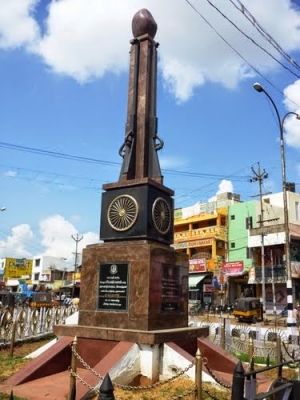
When one mentions the word mutiny as part of the Indian independence movement, the first thing that comes to one’s mind is perhaps the Sepoy Mutiny of 1857. But did you know the 1857 revolt was not the first one against the British, and that a revolt happened in South India at least a good half-a-century earlier?
On the midnight of July 10, 1806, several Indian sepoys (soldiers) broke into the Vellore Fort, located in what is now Tamil Nadu, and killed British troops. It is said that the mutiny was taken up at the suggestion of the children of Tipu Sultan, who had been defeated in a war in 1799, and had since been lodged by the East India Company in one part of the Vellore Fort. However, reports say the more compelling reason for the mutiny was simmering resentment. A new dress code for sepoys came into existence in 1805, and it appeared to have not respected the religious sentiments of Hindu and Muslim sepoys. While Hindus were prohibited from adoming any religious marks on their foreheads, Muslims were asked to get rid of their beards. Further, there were talks of the turban-an indigenous headgear-being replaced by a round hat, which was seen as another attempt at erasing their native identity. What irked the sepoys was also the fact that these changes came about despite caution from the military board that sepoy sentiments must be borne in mind while
The Sepoy Mutiny Memorial pillar outside the Vellore Fort changes to uniform are planned. The attack by the sepoys was curtailed when soldiers from the neighbouring region of Arcot reached the fort. By then it had resulted in injur and deaths on both sides. Further, several protestors were executed by the British later.
Though the revolt lasted just a day, it is said to have instilled a sense of fear in the hearts of the British and given them a glimpse of what was to come.
Did you know?
Barrackpore is associated with the 1857 revolt and Mangal Pandey who attacked British officers. But more than three decades earlier, Barrackpore had witnessed a rebellion. Sepoys were asked to march to Burma (now Myanmar) during the First Anglo-Burmese War because then they did not want to cross the sea on boats due to certain taboos of the time. However, the British refused to give them bullocks for carrying their belongings. Due to this refusal and a few other grievances, the sepoys refused to march. As if a precedent to the Jalianwallah Bagh massacre that was to come much later, several sepoys were killed by the British without any warning.
Picture Credit : Google




